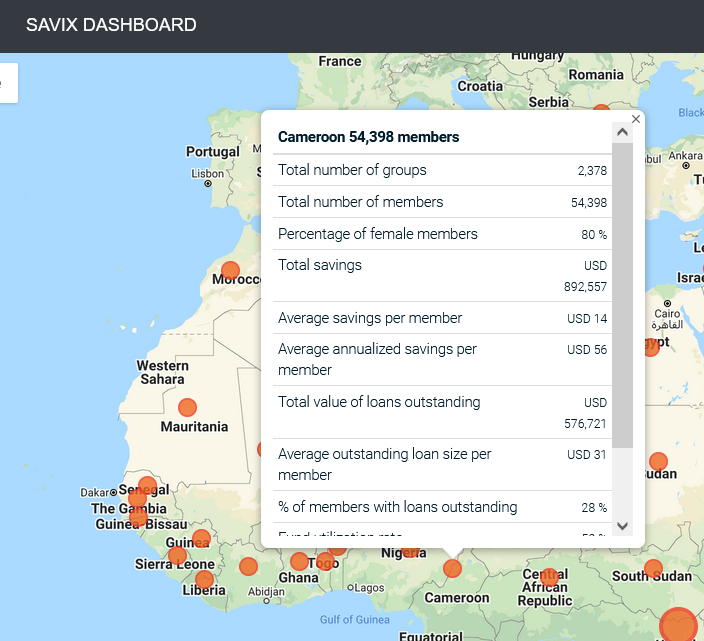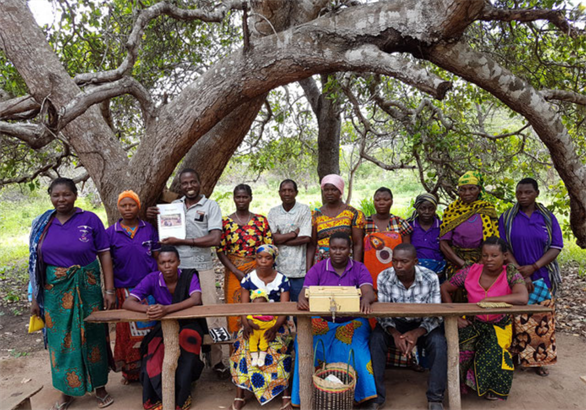An interview with Hugh Allen, CEO at VSL Associates Ltd -an organization dedicated to working with Savings Groups and tracking their performance.
There are hundreds of thousands of Savings Groups (SGs) in the unbanked communities around the world. These small, member-owned institutions are composed of people who save together and take small loans from those savings at interest rates determined by the group. Transparent, structured and democratic, SGs have proven to be one of the most effective, low-cost mechanisms for providing basic financial services to the poor in the developing world.
What is the importance of Savings Groups?
The first organisation that promoted SGs was CARE International, whose chief technical advisor later established VSL Associates - a social enterprise dedicated to the development of SGs worldwide. VSL Associates has worked to standardize their methodology and has trained CRS, Plan International, AKF and numerous southern NGOs. VSL Associates works mainly with local organisations and INGOs to facilitate the creation of self-managed and self-capitalized SGs.
SGs appeared in the early 1990s, when it became apparent that the 2.5 billion unbanked adults worldwide need a new savings model, which enables them to operate sustainably at very low cost: reliably offering the right products at the right price, on their doorstep.
SGs are groups of 15-25 people that use members' savings to lend to each other. Members can save in varying amounts and, by saving frequently in very small sums, they can build their savings more easily, contributing to improving the security of the household. Loans are available to members and can be repaid in flexible installments at a monthly service charge determined by the group. This flexible repayment system is a decisive advantage when compared to the rigid repayment demands of MFIs. While Micro-finance Institutions (MFIs) focus on credit, because interest income is their main source of revenue, it is savings that improve household cash-flow management and are a better fit for the poorest: no-one ever complained of having too much savings.
How did technology come to support their organic growth?
VSLAs were first created by CARE in 1991 in Niger, subsequently tested in Mali, Tanzania and Zimbabwe. As the model started spreading organically to other African countries and beyond, although it worked very well everywhere it was tried, little attention was being paid to systematic measurement of scale, performance and efficiency.
VSL Associates, working together with Software Group therefore created the first widely used Excel-based MIS. This went through 4 generations, but 11 years ago we reached the limits of what Excel could offer and developed a cloud based SAVIX MIS in which organisations could create their own MIS instances, on an SAAS platform, populated by single or an unlimited number of projects.
What is the relationship of the SAVIX MIS to the SAVIX Dashboard?
While the SAVIX MIS data is privately held by the users, the SAVIX Dashboard enables user-organisations that are using the MIS to contribute their most recent data to a visual platform in which 12 standard metrics are applied, displayed as national, sub-regional, continental, and global level results. The results are therefore anonymized, as summaries, and averages of results at each level, freely available in the public domain and updated weekly
Both the SAVIX MIS and the SAVIX Dashboard are jointly managed by VSL Associates and Software Group
How have the SAVIX MIS and the SAVIX Dashboard evolved?
The SAVIX MIS was created in 2011, funded by the Bill & Melinda Gates and Mastercard Foundations. This first version allowed data entry in multiple locations, real-time reporting and project aggregation and comparison. In 2018, Software Group and VSL Associates rebuilt the platform, using their own resources. This was a more stable, faster and comprehensive version, with an improved Graphical User Interface, more comprehensive reports that allows for the entry of data using a mobile app.
The public SAVIX was also updated into a simpler, more visually appealing and understandable format. In 2018 the SAVIX MIS became a fee-for-service product that has allowed Software Group and VSL Associates to cover their costs and invest in a permanent 3-person technical team in Nairobi that provides technical support (bug-fixes and new product development. A single person in VSL Associates concentrates on field liaison, testing and contributes to new product development.
Today SAVIX is the only reporting system that provides standardized and up-to-date reports on SGs programs worldwide. Working through more than 1,200 institutions, currently it tracks in real time more than 630,000 SGs across Africa, APAC and LATAM, covering 14 million members in 77 countries, reached through more than 1,200 implementing agencies.
Figure 1: The SAVIX Dashboard with results from Cameroon

As a result, the SAVIX MIS and the SAVIX Dashboard have become the industry standard for reporting on SG programs.
What’s ahead for the SAVIX MIS and Dashboard?
VSL Associates, supported by Software Group, is committed to:
-
improving the quality of the data so the groups and organizations, working with them, can use it better. To achieve this a more comprehensive set of data validations are being built into the SAVIX MIS and extreme data is excluded from the SAVIX Dashboard.
- the development of a 3-stage mobile application intended for use by SGs, enabling them to enter individual-level data. This app will allow:
- an option to select a free ‘Stand-alone’ app in which independent SGs can record basic individual member transactions and group cash balances, with no obligatory linkage to the internet or to an implementing organization.
- a Facilitated group app, provided by implementing organisations to SGs, which works as the Stand-alone app, but with more comprehensive group data, linked to the SAVIX MIS.
- a Field Officer app in which data is collected by a Field Officer and directly entered into the SAVIX MIS, upgraded from the existing Data Entry app.






